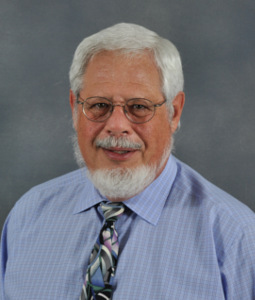Department of Chemistry and Biochemistry
Students, Researchers and Emeritus
Scott R. Goode
| Title: | Distinguished Professor Emeritus |
| Department of Chemistry and Biochemistry | |
| Email: | srgoode@mailbox.sc.edu |
| Fax: | 803-777-9521 |
| Office: | 1112 GR 110 |
| Resources: | CV [pdf] All Publications |

Education
B.S., 1969, Chem. University of Illinois-Urbana
Ph.D., 1974, Michigan State University
Honors and Awards
Fellow of the American Chemical Society, 2016; University of South Carolina Distinguished Service Award, 2013; SC Section ACS Distinguished Service Award, 2009; Ada Thomas Advising Award, 2000; College of Science and Mathematics Undergraduate Student Advisor of the Year Award, 1998; Michael J. Mungo Teaching Award, 1998; Amoco Teaching Award, 1991; Distinguished Professor SC Honors College, 1989; Distinguished Professor SC Honors College, 1986.
Research Interests
Analytical atomic spectroscopy; plasma spectroscopy; laser atomization; chemical instrumentation, automated and interactive computer control over analytical experiments; environmental analytical chemistry, analytical chemistry of radioactive wastes, laboratory design and infrastructure, chemical safety and chemical safety education.
Research in modern analytical chemistry is research in understanding measurements, their accuracy, precision, and their sources of errors. The analytical chemist oversees the entire process that transforms physical and chemical information, like concentration, into a form meaningful to scientists-a number. The goal of the analytical chemist is to produce the "best," or optimum measurement. But in order to optimize the measurement, the sources of errors and imprecision of each step in the measurement process must be known. We are currently studying inductively coupled plasmas and laser induced plasmas to learn the fundamental plasma processes and to use them as excitation sources in atomic spectroscopy.
Laser Induced Breakdown Spectroscopy (LIBS)
LIBS uses a tightly focused laser beam to vaporize a sample and form a plasma. This relatively new method has many advantages since it can use gas, liquid, or solid samples, and is amenable to remote analysis via fiber optic link. For LIBS to realize its full potential, the events leading to the generation of the optical signal must be studied and understood. One of the most important questions facing the users of this (and of any) analytical tool is whether the sample matrix influences the analytical results. If the analysis is matrix independent, then 2.0% lead in paint produces the same signal as 2.0% lead in steel. Although the matrix effect could possibly be studied empirically, fundamental studies of the laser induced breakdown spectroscopy provide a much more organized basis to answer this, and many other questions. Such work is in progress in our laboratory.
Selected Publications
Lauren E. Grabowski and Scott R. Goode. Review and analysis of safety policies of
chemical journals. Journal of Chemical Health & Safety 23, 2016, pp. 30-35.
DOI: 10.1016/j.jchas.2015.10.001.
Dockery, C. R.; Blew, M. J.; Goode, S. R. Visualizing the Solute Vaporization Interference in Flame Atomic Absorption Spectroscopy. Journal of Chemical Education 2008, 85(6), 854 - 858. DOI: 10.1021/ed085p854.
Dockery, C. R.; Pender, J. E.; Goode, S. R. Speciation of Chromium Via Laser-Induced Breakdown Spectroscopy of Ion Exchange Polymer Membranes. Applied Spectroscopy 2005, 59(2), 252 - 257. DOI:10.1366/0003702053085061.
Metz, L. A.; Meruva, N. K.; Morgan, S. L.; Goode, S. R. UV Laser Pyrolysis Fast Gas Chromatography/Time-of-Flight Mass Spectrometry for Rapid Characterization of Synthetic Polymers: Optimization of Instrumental Parameters. J. Anal. Appl. Pyrolysis. 2004, 71, 313 - 325. DOI: 10.1016/S0165-2370(03)00092-5.
Dockery, C. R.; Goode, S. R. Laser-Induced Breakdown Spectroscopy for the Detection
of Gunshot Residues on the Hands of a Shooter: Applicability and Analysis of Error.
Appl. Optics. 2003, 42(30), 6153-6158.
DOI: 10.1364/AO.42.006153.